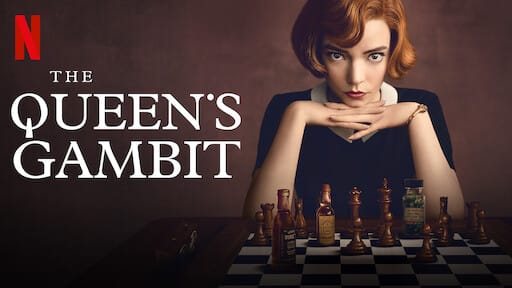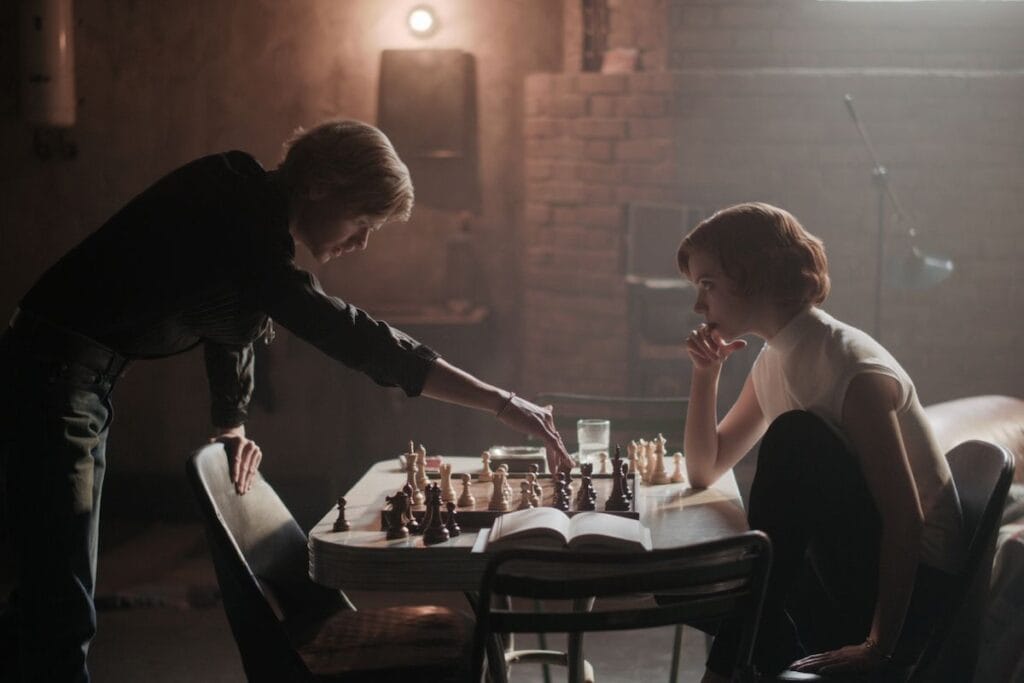A Historical Glimpse: The World of Chess in the 1960s
The 1960s was a decade characterized by significant political, social, and cultural transformations, and the world of chess was no exception. This period saw an unprecedented surge in the global popularity of chess, largely fueled by the geopolitical tension between the Soviet Union and the United States during the Cold War. Chess evolved from being a mere recreational activity to a prominent intellectual battleground. This intense rivalry is a pivotal backdrop in the narrative of ‘The Queen’s Gambit’, the show that has captivated Netflix audiences.
Prominent during this era was the Soviet school’s dominance in chess, with players like Mikhail Tal, Boris Spassky, and Tigran Petrosian leading the charge. These grandmasters were not only supreme tacticians and strategists but also considered symbols of Soviet intellectual superiority. Their matches, characterized by deep combinations and psychological warfare, were followed globally, transforming chess into a high-stakes spectacle. The rise of these chess maestros coincided with an era of intense training and scientific approaches to the game, elevating chess from mere pastime to a demonstration of national pride and intellectual prowess.

In contrast, the United States had its own rising stars. Bobby Fischer, perhaps the most iconic American chess player of the 20th century, emerged in the late 1950s and came into full prominence during the 1960s. Known for his unorthodox playing style, relentless competitiveness, and groundbreaking contributions to chess theory, Fischer’s battles against Soviet grandmasters were not just personal duels but carried broader ideological implications. These encounters became emblematic of the broader Cold War, symbolizing the intellectual and strategic contests between the two superpowers.
The 1960s saw chess increasingly embedded in popular culture. Public interest was at an all-time high, with chess clubs, tournaments, and media coverage proliferating. This decade solidified chess as a competitive sport, an intellectual pursuit, and, implicitly, a stage for global ideological battles. Understanding this historical context enriches one’s appreciation of ‘The Queen’s Gambit’, showcasing not only the personal struggles and triumphs of its protagonist, portrayed by Anya Taylor-Joy, but also the intricate world where the game itself was woven deeply into the fabric of international relations and cultural prestige.


Beth Harmon: The Prodigy and Her Pawns
Beth Harmon, the central character of ‘The Queen’s Gambit’ on Netflix, epitomizes the archetype of a prodigious talent shaped against the odds. Emerging from the shadows of a tumultuous childhood spent in an orphanage, Beth’s journey is a narrative of resilience and brilliance. Her path from an innocent girl grappling with addiction to a globally celebrated chess prodigy reflects both her extraordinary intellect and inner demons.
From a young age, Beth exhibits an arresting aptitude for chess, initially sparked by clandestine lessons with the orphanage’s janitor, Mr. Shaibel. Her innate strategic genius and visual-spatial intelligence allow her to master complex moves and anticipate her opponents with remarkable precision. This early exposure sets the stage for Beth’s rapid ascent in the competitive chess world, where her unique approach to problem-solving and game strategy stands out.

As Beth’s skills flourish, so do her personal struggles. Her voracious quest for victory is often punctuated by a parallel battle with substance abuse, depicted poignantly throughout the show. These dual narratives of intellectual triumph and emotional turmoil are profoundly intertwined, highlighting the depth of her character and the psychological complexities that fuel her genius.
Key moments in Beth’s career illuminate her progression from local competitions to facing elite grandmasters. Triumphs in these pivotal matches, such as her first significant tournament win or her climactic encounter with Russian champion Vasily Borgov, underscore her genius and growth. Each victory is a testament to her analytical prowess and indomitable spirit, elements that endear her to audiences and cement her legacy within the chess community.
In ‘The Queen’s Gambit’, Beth Harmon’s journey offers a compelling portrayal of a prodigy whose strategic brilliance in chess mirrors her intricate battle with personal adversities. Anya Taylor-Joy’s exquisite performance breathes life into Beth, making her both relatable and awe-inspiring. Through this role, viewers are invited to witness a powerful narrative of triumph that transcends the chessboard, captivating minds and hearts alike.

Chess as a Metaphor: Life’s Gambits and Strategies
The Netflix show, “The Queen’s Gambit,” masterfully employs chess as a metaphor for life’s intricate gambits and strategies. At its core, the narrative illustrates that just as in the game of chess, navigating life’s challenges requires a combination of foresight, calculated risks, and strategic planning. Beth Harmon, portrayed by Anya Taylor-Joy, encounters numerous personal and professional hurdles, each mirroring the complex decisions she faces on the chessboard.
One of the central themes of “The Queen’s Gambit” is the concept of sacrifice. In chess, players often have to sacrifice pieces to gain a positional advantage, a principle that Beth internalizes in her life journey. This is evident during her struggle with addiction; she grapples with the choice between succumbing to her vices or sacrificing short-term comfort for long-term stability and success. Through these personal battles, Beth demonstrates resilience, symbolizing the constant need to adapt and persevere, just as one must in a high-stakes chess match.

Furthermore, the show underscores the importance of patience. Chess, a game that requires deep concentration and patience, parallels Beth’s approach to her aspirations and personal relationships. Whether it is her determination to rise to the top of the chess world or her efforts to mend broken relationships, the show highlights that patience and persistence are critical to overcoming life’s obstacles.
The philosophical aspect of chess, with its emphasis on strategic thinking and problem-solving, resonates with broader human experiences. The game’s reliance on foresight and anticipation reflects life’s unpredictability, compelling individuals to prepare for the unexpected. Beth Harmon’s analytical mind and her ability to anticipate her opponents’ moves draw a direct line to the complexities of planning and executing life’s numerous decisions.
Thus, “The Queen’s Gambit” beautifully captures the essence of chess as a reflection of life. The show offers viewers a profound insight into how the patience, sacrifices, and strategic thinking required in chess can effectively mirror the realities of human existence, making it not just a story about a game, but a poignant commentary on life itself.




The Cultural Impact of ‘The Queen’s Gambit’
The Netflix show ‘The Queen’s Gambit’ has had a significant cultural impact since its release, contributing to a renewed interest in chess worldwide. Remarkably, the show has transcended the realms of television to influence both popular culture and the chess community. Sales of chess sets soared, and online platforms like Chess.com and Lichess experienced unprecedented surges in user activity. New players, inspired by the show’s engaging narrative, have taken up the game, breathing new life into a centuries-old pastime.
Notably, ‘The Queen’s Gambit’ has been celebrated not just by fans, but by critics as well, receiving numerous accolades and awards. The outstanding performance by Anya Taylor-Joy as Beth Harmon, combined with meticulous production and storytelling, garnered praise and solidified the show’s critical acclaim. The recognition extends to prestigious awards, further highlighting the show’s excellence and its storytelling prowess.
In addition to its broad popular appeal, ‘The Queen’s Gambit’ has made significant strides in promoting women in chess. Traditionally a male-dominated field, the representation of a female chess prodigy has encouraged many young women to pursue the game, fostering a more inclusive environment within the chess community. The real-life reflections of the show’s impact can be seen in the increased participation of women in chess tournaments and clubs.

Reflecting on the potential long-term effects, ‘The Queen’s Gambit’ may well have a lasting legacy within both the world of chess and entertainment. Its influence could lead to continued growth in chess interest, more diverse participation, and inspire future media that explore intellectually stimulating themes. The show’s ability to weave a compelling narrative around the strategic depth of chess indeed exemplifies its intellectual brilliance and cultural resonance.









